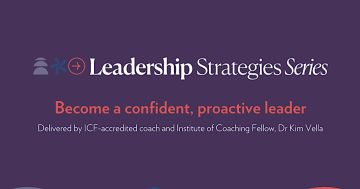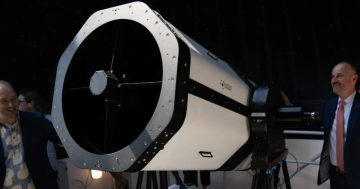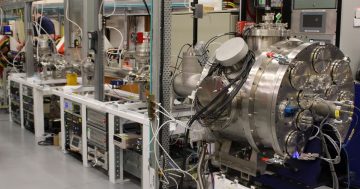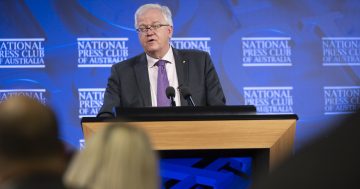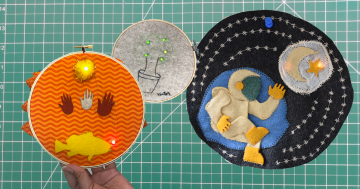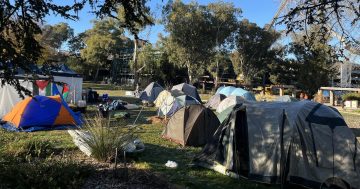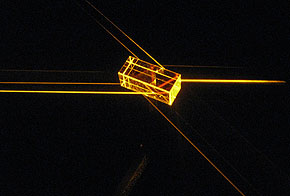 [Light passes through the crystal in the quantum memory experiment. Photo: ANU]
[Light passes through the crystal in the quantum memory experiment. Photo: ANU]
ANU is trumpeting their success at freezing holograms:
The team at the ANU Research School of Physics and Engineering used a technique they pioneered to stop and control light from a laser, manipulating electrons in a crystal cooled to a chilly -270 degrees Celcius. The unprecedented efficiency and accuracy of the system allows the delicate quantum nature of the light to be stored, manipulated, and recalled.
“Light entering the crystal is slowed all the way to a stop, where it remains until we let it go again,” explains lead researcher Morgan Hedges. “When we do let it go, we get out essentially everything that went in as a three-dimensional hologram, accurate right down to the last photon.
“Because of the inherent uncertainty in quantum mechanics, some of the information in this light will be lost the moment it is measured, making it a read-once hologram. Quantum mechanics guarantees this information can only be read once, making it perfect for secure communication.”
The same efficient and accurate qualities make the memory a leading prospect for quantum computing, which has the potential to be many times faster and more powerful than contemporary computing.
In addition, the researchers say the light storage will allow tests of fundamental physics, such as how the bizarre phenomenon of quantum entanglement interacts with of the theory of relativity.
I hope they get a patent on it.











